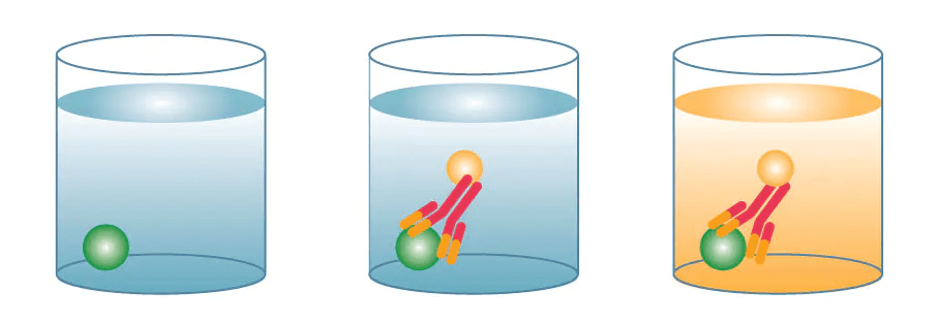
12 Dec 5 Ways to Get the Most out of ELISAs
Are you just starting with ELISAs and want to know what to buy? ELISA is a well-known scientific test method used in the lab to detect protein-antibody interactions. It is not only helpful in conducting medical research applications, but it also has excellent industrial uses like tracking down pathogens in food, environmental diagnostics, etc. Use this quick guide to learn exactly how to get the most from your coating buffer.
Know Your Antigen
ELISA (Enzyme-Linked Immunosorbent Assay) is the gold standard in testing for allergic reactions. They don’t just get the job done; they get it right every time! In ELISAs and many other infectious diseases, a single cell or virus may be able to infect another in the same manner and replicate. This is called the passive spread. There are a lot of inactive contacts between people in this community, so your immune system can easily recognize your specific antigen. Since everyone is exposed to this disease at some point in their lives, you should know your particular antigen well enough so that you’ll be able to fight it more effectively if it ever re-appears again.

Know Your Assay Design
The next step in getting the most out of ELISAs is to know your assay design. This means understanding how the sample you are testing interacts with the antibodies used in your ELISA, as well as what happens during the incubation period between a sample and the antibody. Once you understand this information, it will be easier to optimize your assays so they produce more accurate and valuable results.
Get That SOP Poppin’
Another best way to get the most out of ELISAs is to ensure you follow the SOPs.
The SOPs are described as follows:
- The Procedures and Operational Procedures (POPS).
- The standard operating procedure (SOP) is a document that outlines how a particular system works in detail. It is used by employees or external parties who need to know how to perform organizational tasks. An SOP can be used for any system or process and may be written in one or multiple languages depending on what needs to be communicated.
One thing that can make or break your ELISA experiment is the buffer. Using the right Elisa Coating Buffers will mean you’ll have more success in getting that SOP to work the way it should with your antibody-antigen interaction.
High-Quality Reagents Are a Must
If you want to get the most out of ELISAs, you’re going to need a high-quality reagent. The quality of your reagents is paramount. You won’t get the desired results if they’re not good enough. So the first thing you should do when starting an ELISA is: buy a high-quality kit.
You can find these kits online or in some stores, but most people prefer using online stores because they are often cheaper than retail shops. Many online stores sell different items related to ELISA kits, including the AP Stop Solution, ELISA coating buffers for Plate Coating, TMB stop solutions, etc.
Understand the Details of Your Assay
The ELISA assay is a powerful tool for detecting and quantifying the presence of a biomolecule, such as an antibody.
The primary steps in the ELISA are:
- Prepare the reaction mixture: Add reagents to create an assay mixture.
- Add sample to reaction mixture: Add the suspected sample to the prepared assay mixture.
- Add substrate to reaction mixture: Add an antibody to the reaction mixture and measure its binding to your substrate.
Takeaway
ELISAs can be a handy tool, but it is essential to understand them and not just follow a particular recipe without understanding the assay design. Also, remember that drying out your wells in between reagent additions can have a detrimental impact on your results because ELISA reactions must occur in solution. To avoid plates from drying out, it is crucial to set up your workstation with careful consideration for ergonomic efficiency. This will allow you to have each reagent available in its proper place at the appropriate time. So, get your ELISA Starter Kit today!
The information on MedicalResearch.com is provided for educational purposes only, and is in no way intended to diagnose, cure, or treat any medical or other condition.
Some links may be sponsored.
Always seek the advice of your physician or other qualified health and ask your doctor any questions you may have regarding a medical condition. In addition to all other limitations and disclaimers in this agreement, service provider and its third party providers disclaim any liability or loss in connection with the content provided on this website.
Last Updated on December 12, 2022 by Marie Benz MD FAAD
